Article and Photos by Bob Walker
Los Alamos is a wonderful place to see a large variety of bird species. Our four-season weather and our large span of elevations in the county — from the Rio Grande River to the Jemez Mountain peaks — make for a very diverse collection of habitats that appeal to many different birds. You can explore these many different birds using the eBird, which is administered by Cornell Labs. PEEC’s Nature Guide is also a great resource to get started learning about our local birds (and other wildlife!).
Here is a list of the 20 most commonly reported birds in the county over the last 20 years that PEEC has been active in the Los Alamos area. You can see many of these birds at the Los Alamos Nature Center. If you stop by on Wednesday mornings from 10 AM – 12 PM, you can find me in the observation room chatting about birds with our visitors.
Let’s do this as a countdown, starting with #20, and working our way to #1!
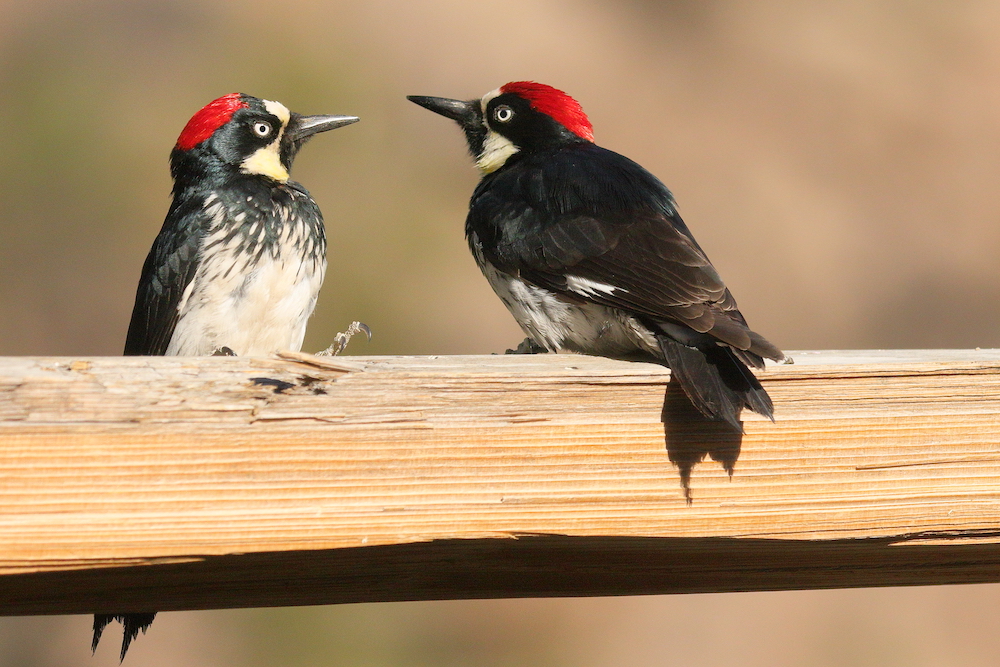
20) Acorn Woodpecker
One of our most gregarious birds in Los Alamos is the distinctive Acorn Woodpecker. They live and breed in the county, especially in the mountains, but they are also regular visitors to the Los Alamos Nature Center. They can be aggressive to other birds and to the chipmunks and squirrels that compete with them for seed at the nature center.
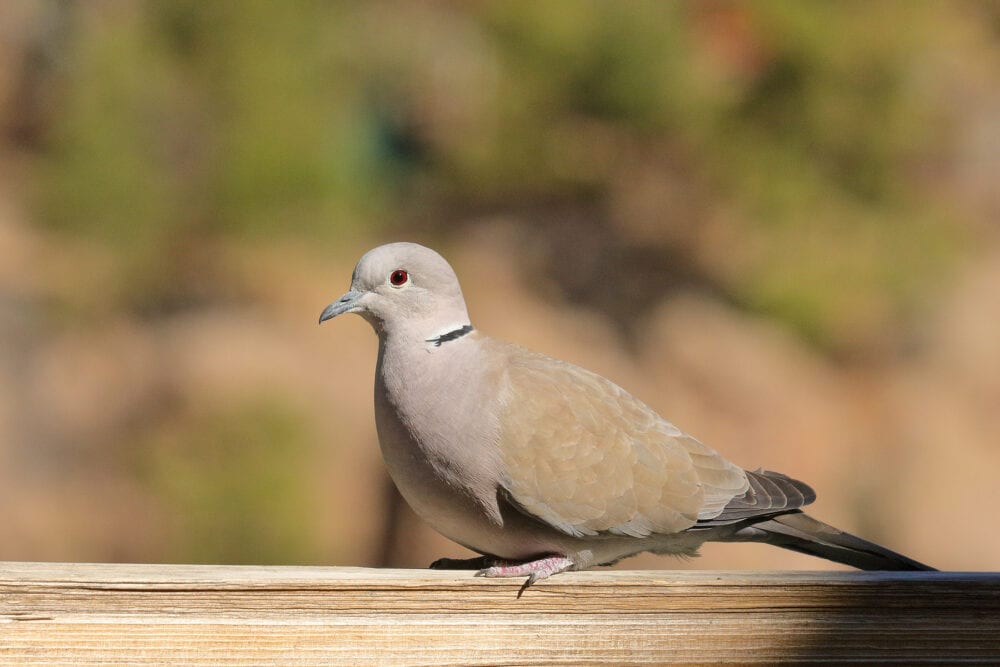

19) Eurasian Collared-Dove
Originally from India, the Eurasian Collared-Dove was introduced to the Americas after being released in the Bahamas. They appear to be displacing our native dove, the Mourning Dove. Easily recognized by the black collar at the back of their neck, they sing a soft cooing song especially in the early morning.
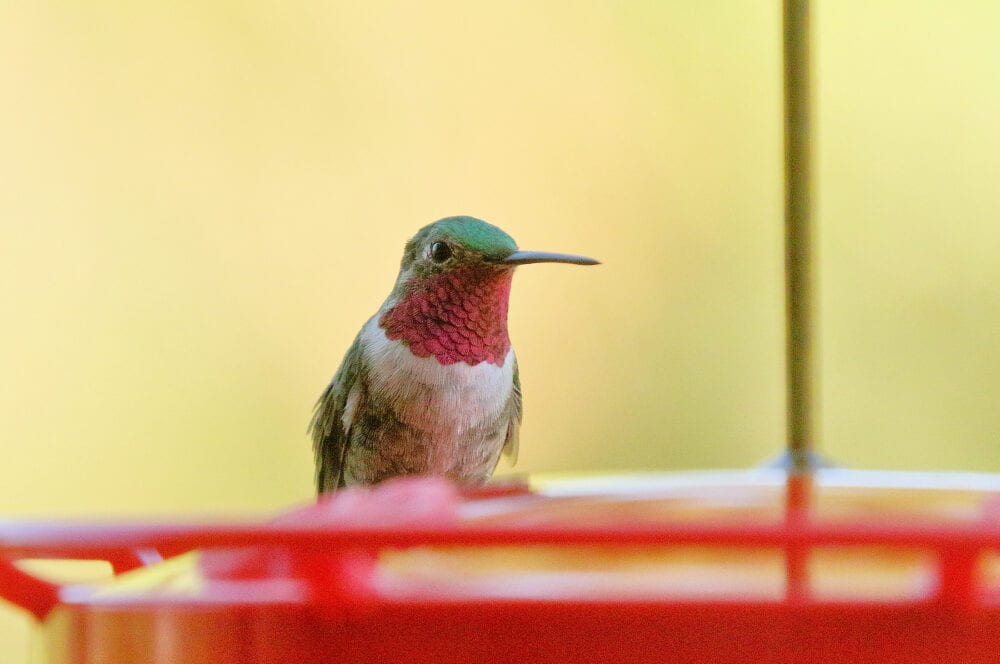

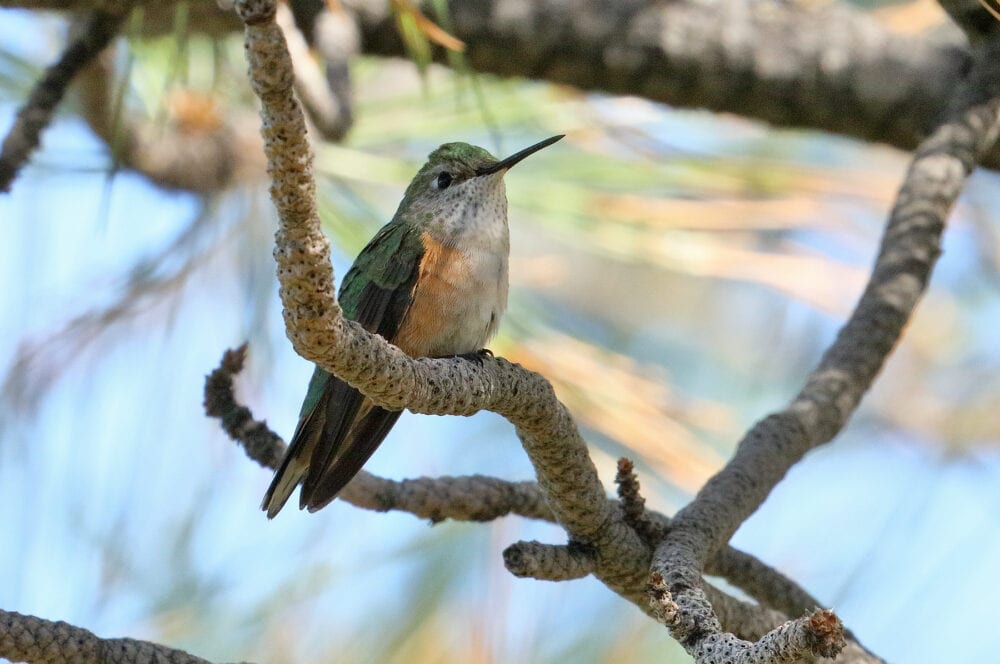

18) Broad-tailed Hummingbird
The Broad-tailed Hummingbird is one of two hummingbird species that breed in Los Alamos County in the spring and summer. Broad-tailed and Black-chinned Hummingbirds nest and breed in the canyons right below the nature center. They are joined in mid-summer by Rufous and Calliope Hummingbirds, as they migrate south to Mexico for the winter. Broad-tailed males, with their bright pink throats, can easily be recognized by the trilling sound their wings make when they fly. They are frequent visitors to nectar feeders, but insects also make up a good portion of their diet, especially when raising young who need the protein.
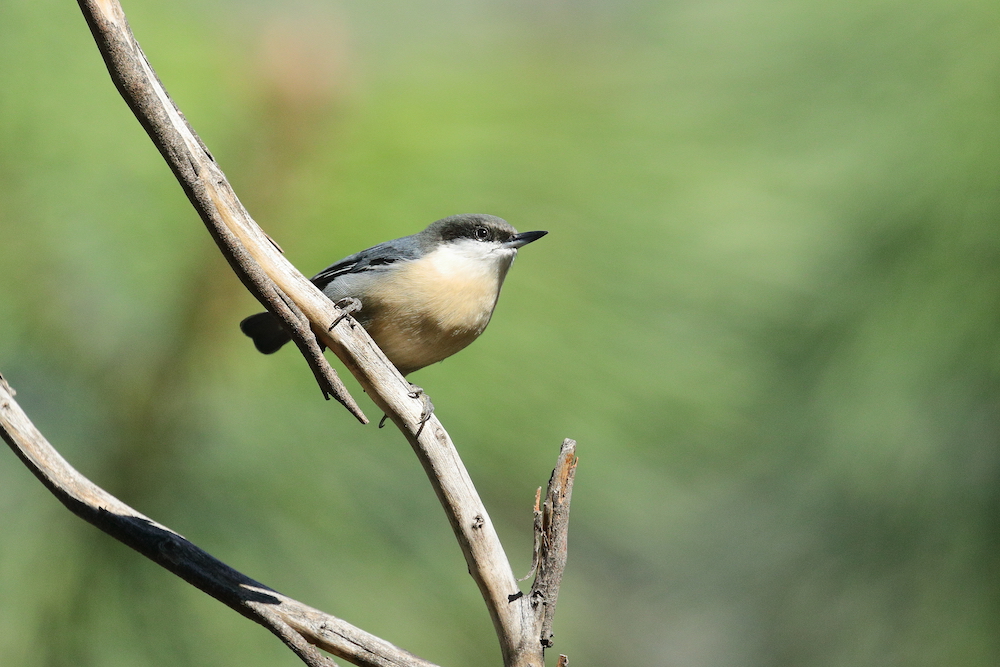

17) Pygmy Nuthatch
One of our smallest birds, the Pygmy Nuthatch is another regular visitor to the nature center. Colored dark blue or gray above and white to light brown below, these personable birds often travel in flocks and readily take seed from feeders. They also seem to appreciate the water saucer next to the observation room window, from which they regularly take a small sip.
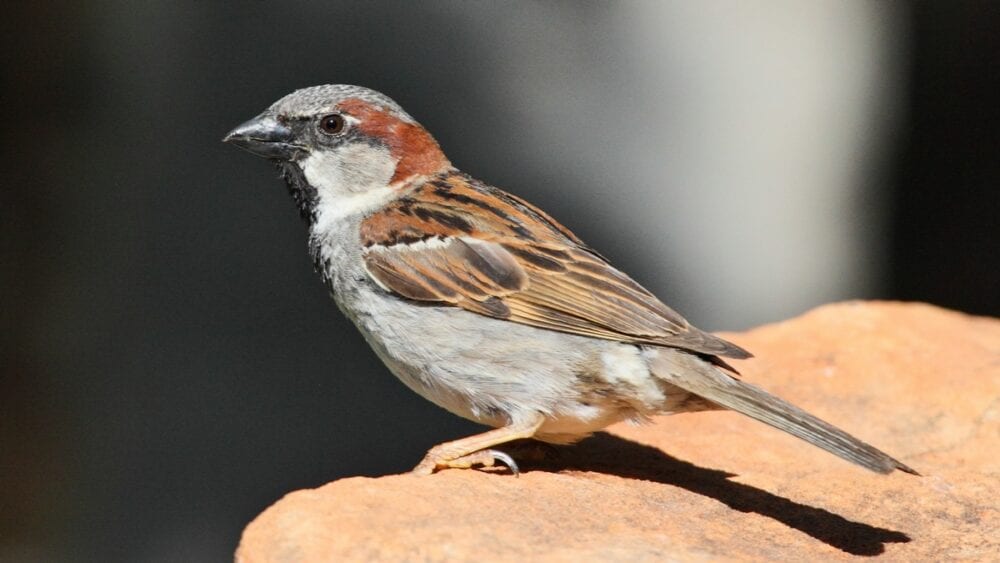

16) House Sparrow
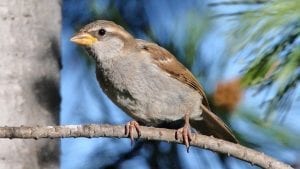

House Sparrows are one of the most widely distributed birds across the northern hemisphere, originating in Britain. We do not see them that often at the nature center, but they are common at seed feeders both in Los Alamos and White Rock. They stay here all year long, and can often be heard noisily chirping in large numbers while hidden deep inside a bush.
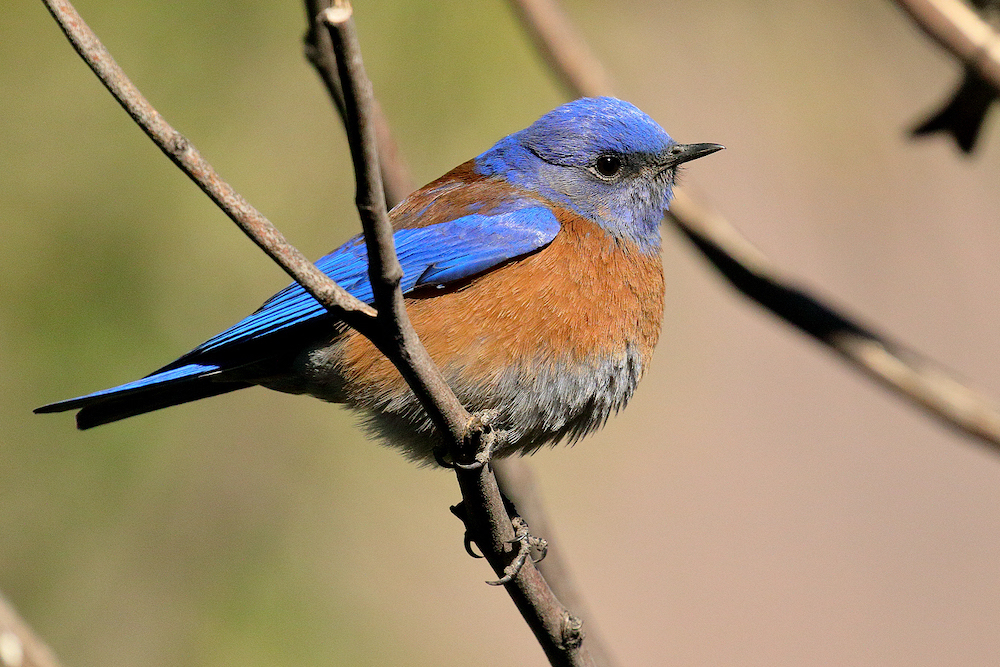

15) Western Bluebird
The Western Bluebird is resident in the County all year long, and will readily breed in bluebird houses set up at homes. They are very similar to the Eastern Bluebird, but the Western Bluebird has a blue throat and a gray belly. They are insect eaters, and favor large open meadows. The shiny blue feathers of the male, as well as the more delicate blue of the females are one of the prettiest colors in nature. (At least, I think so!)
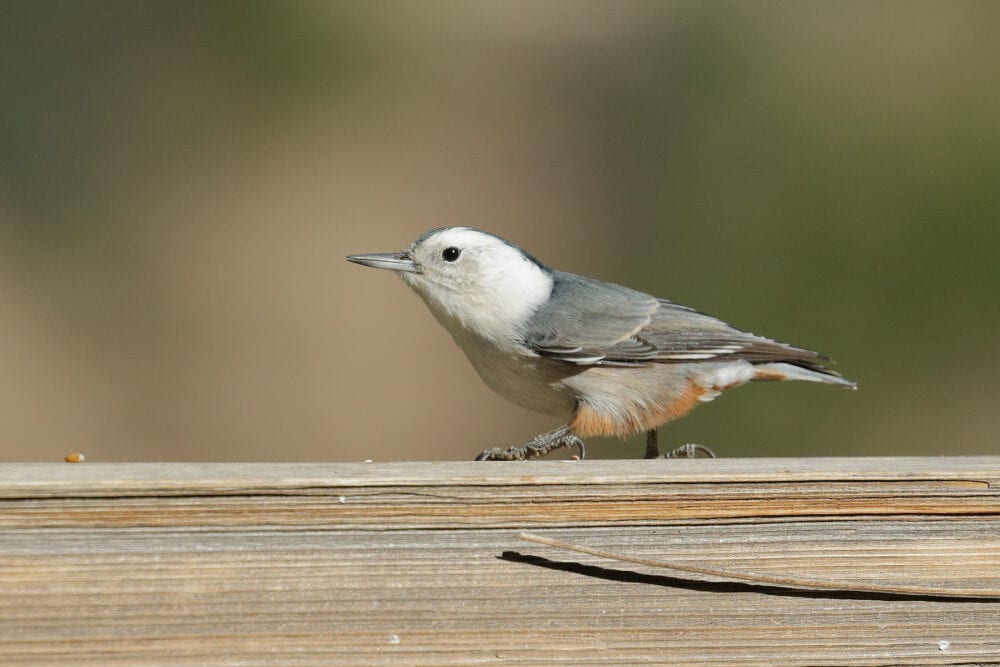

14) White-breasted Nuthatch
The White-breasted Nuthatch is another very common visitor to the nature center. It is larger than the Pygmy Nuthatch, and has white feathers encircling its eye. Like other nuthatches, he is often seen walking upside down on branches and the bark of trees while looking for insects. However, he is also quite happy with a diet of seeds.
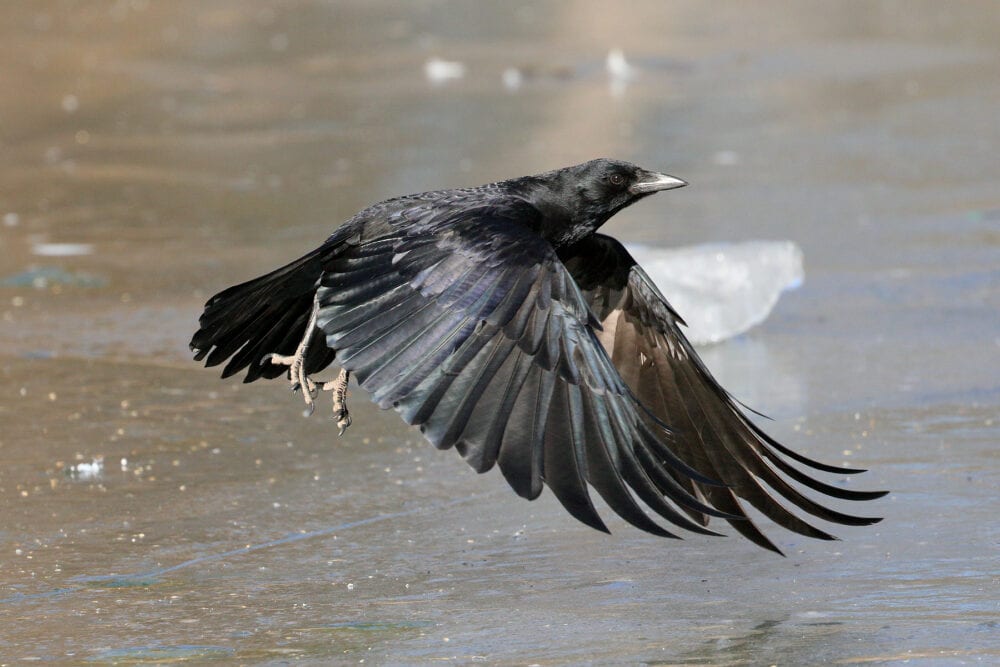

13) American Crow
Often traveling together in large flocks, the American Crow is instantly recognizable as a large black bird, but can be quite difficult to tell apart from a Common Raven. There are many hints you can use, but mostly the Crow is smaller, has a more pointed beak, and makes a higher pitched barking voice. They can be seen at any time of year foraging for insects, seeds, and small animals.
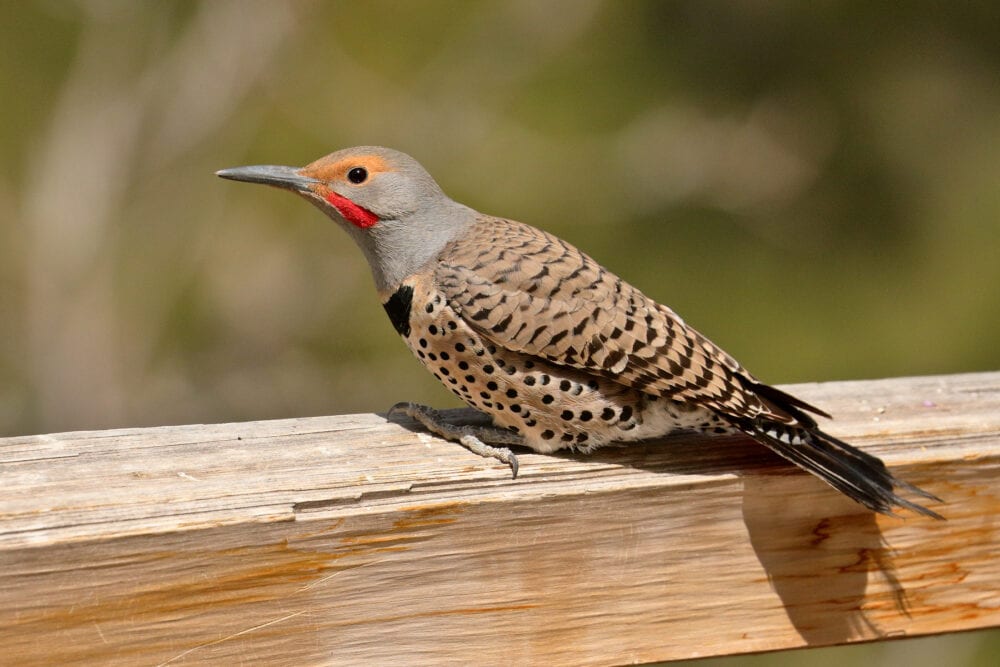

12) Northern Flicker
In the Western half of the United States, almost all the Northern Flickers we see are Red-shafted Flickers, named appropriately for the bright red feathers that are very noticeable from below when you see the bird flying. In their amorous efforts to woo females, the males (pictured above) have a red mustache and a habit of pecking at houses, rain gutters, or anything that makes a loud noise. This behavior does not endear them to many homeowners, but their beautiful plumage must nevertheless be appreciated.
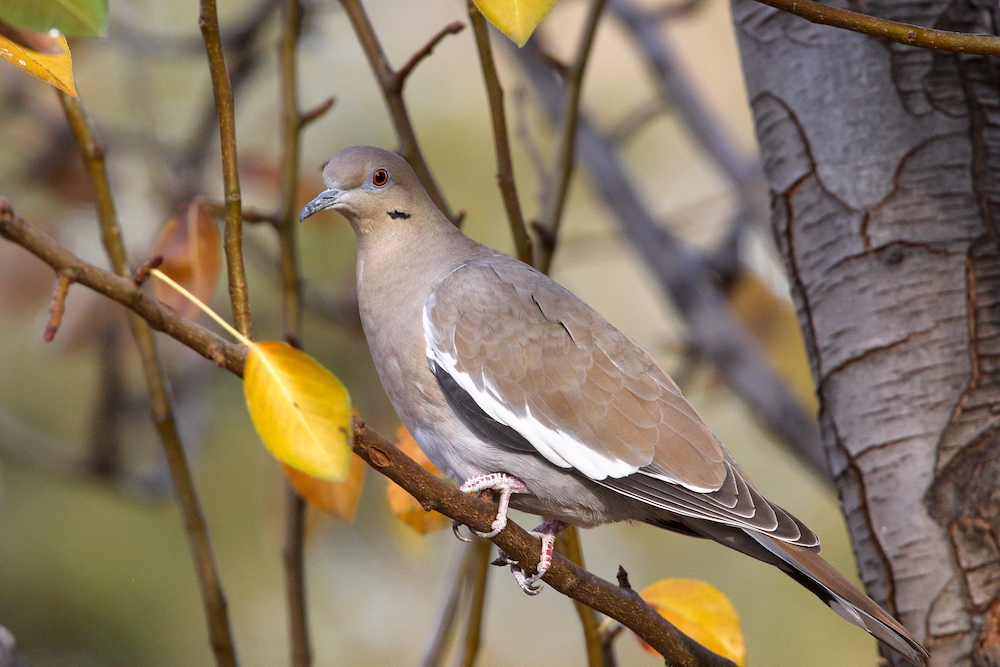

11) White-winged Dove
The White-winged Dove is a common resident of Mexico, and is expanding northward into Arizona and New Mexico. Named for the white feathers on its wing edge, they can travel together in large flocks, emptying household seed feeders in the blink of an eye. They are quite common, especially in White Rock, all year long.
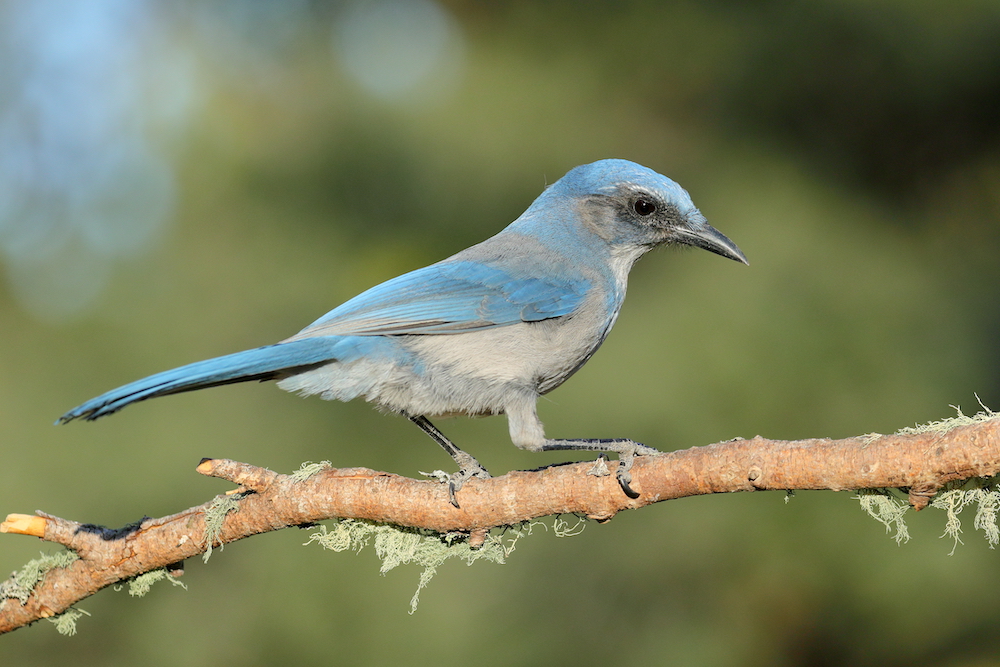

10) Woodhouse’s Scrub-Jay
The Woodhouse’s Scrub-Jay is the recently re-named Western Scrub-Jay, to differentiate it from its close cousin, the California Scrub-Jay. This attractive member of the Jay family is an enthusiastic consumer of peanuts in the shell, lives year-round in the County, and is familiar for his loud screeching call (telling me to put out some more peanuts).
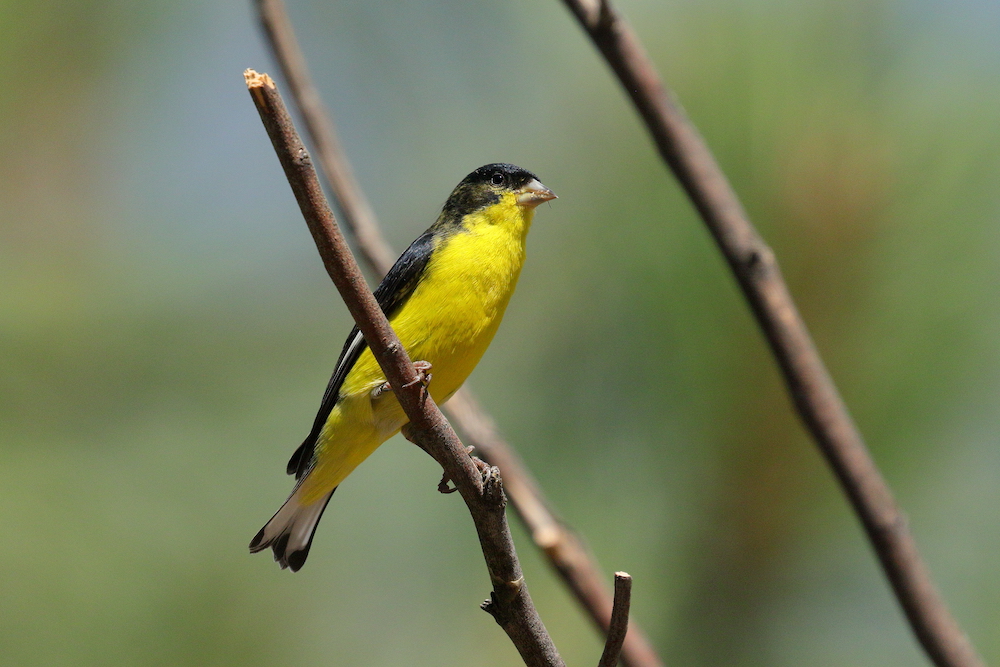

9) Lesser Goldfinch
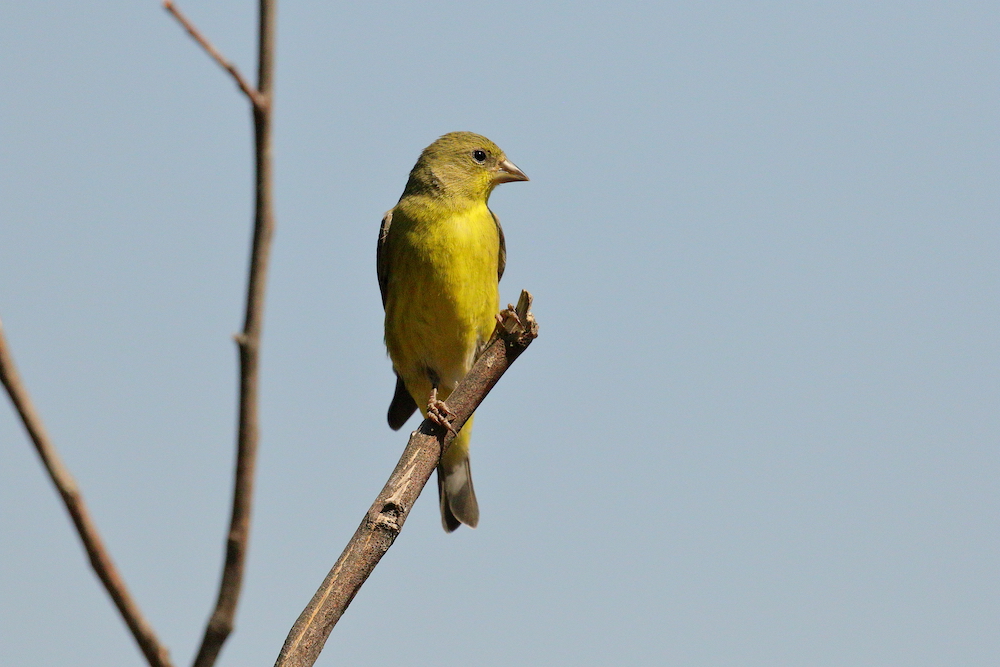

These brightly colored members of the finch family are the Lesser Goldfinches. They sport their bright yellow feathers almost all year long, and the males (right) have black caps and black wings with small white wing bars. The females are a soft warm yellow throughout. They love seeds, millet, and thistle especially. They are most common in the summer, but a few hang around even through the winter.


8) Mountain Chickadee
Who hasn’t heard the distinctive call of the Mountain Chickadee? “Chick-a-dee-dee-dee!” Actually, that is an alarm call, and the number of “dee” syllables indicates the level of alarm he’s broadcasting to the neighborhood. His spring “hey-look-at-me” song is a musical “fee-bee-bee-bee” as he tries to attract mates for the breeding season. These seedeaters are very common all year at the nature center.
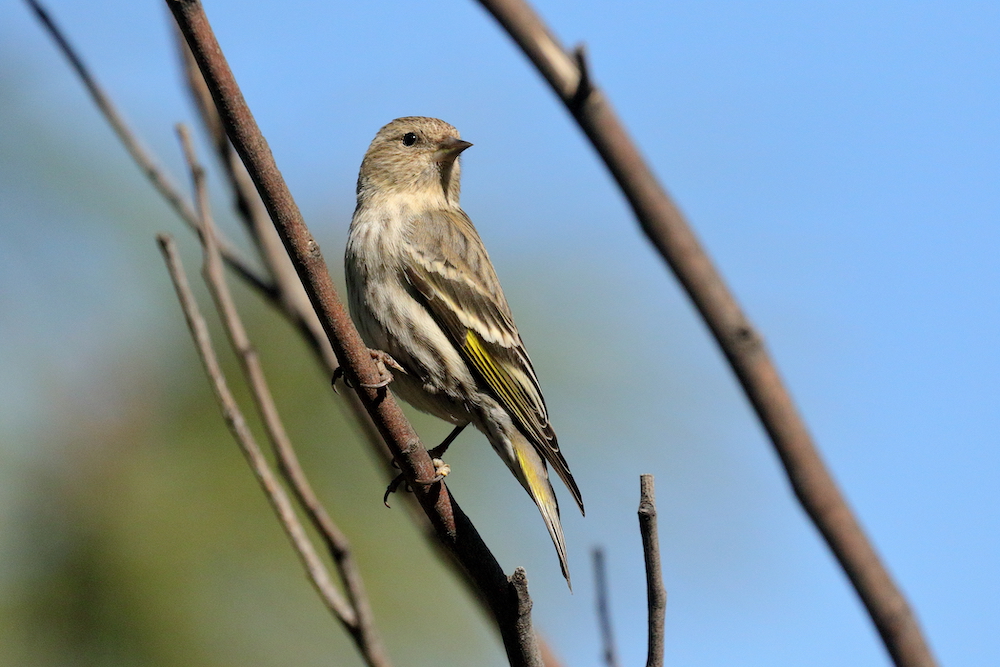

7) Pine Siskin
The very common Pine Siskin is more easily overlooked than our more distinctive birds. He’s the size of the Lesser Goldfinch, but gives the impression of a streaky brown bird very similar to a female House Finch. If you look closer, you’ll see fine yellow wingbars on these seed-eating birds. They are irruptive in nature, meaning that they wander from place to place, not following a specific migration pattern. One week you may have fifty of them at your feeder, and then it may be months before you see many again.
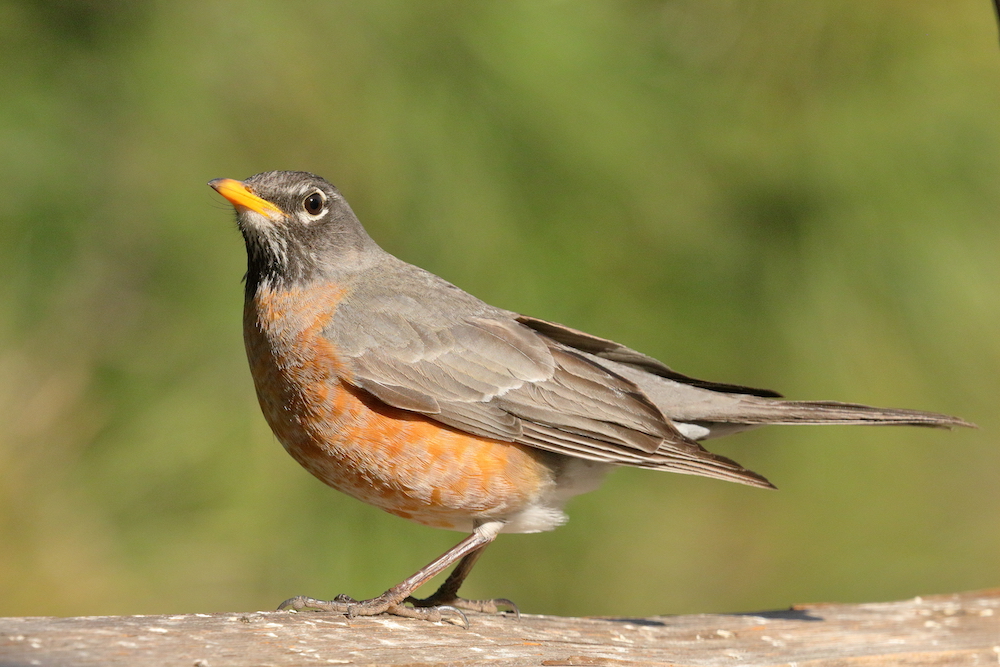

6) American Robin
Probably one of the most recognizable birds ever, the American Robin is a member of the thrush family (like Western Bluebirds!). This early bird sings prolifically in the morning, and has quite a few different vocalizations. Their migration behavior is (surprisingly) not well understood, but here in Los Alamos we see them all year long. Some wintering birds may be migrants, adding to a population of year-round residents. You will see heavily spotted versions of these birds in late summer and early fall, as juveniles start showing up to feed on seeds and insects along with their parents.
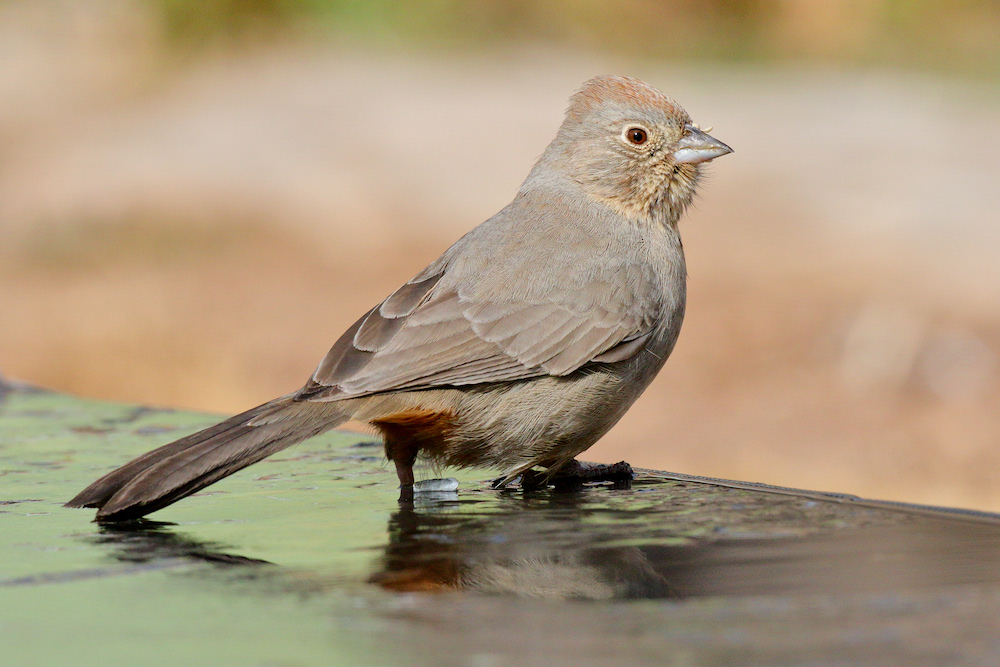

5) Canyon Towhee
There may be a Canyon Towhee hanging out in your garage right now — or maybe resting on the top of your car tire under the wheel well. These easily habituated birds seem quite comfortable around humans, as they hop around on the ground, looking for seeds or insects in leaf litter. Mostly brown overall, larger than a House finch but smaller than a Robin, the Canyon Towhee can be surprisingly strongly marked with a rusty cup, rusty feathers under the tail, a streaky throat, and a blackish spot on the front of its chest.
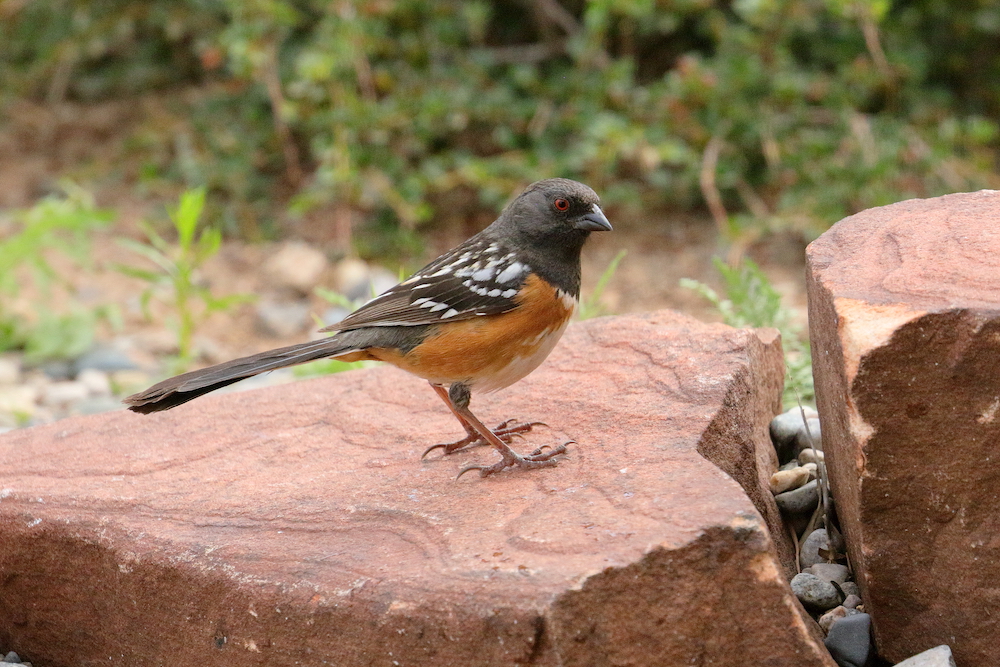

4) Spotted Towhee
One of our most attractive birds is the Spotted Towhee. Just a bit smaller than a Robin, he bears a superficial resemblance to them, with their dark heads, rusty flanks, and long tails. But, they have a black beak, white spots on their backs, a white belly, and the most gorgeous red eyes you could ever see. Like the Canyon Towhee, they love to hop around in leaf litter looking for insects and seeds. They are year-round residents, and one of the earliest birds to breed in the spring. Listen for their cat-like mewing calls; and in spring, their easily recognizable song consists of two to four introductory musical notes followed by a rapid chattering trill.
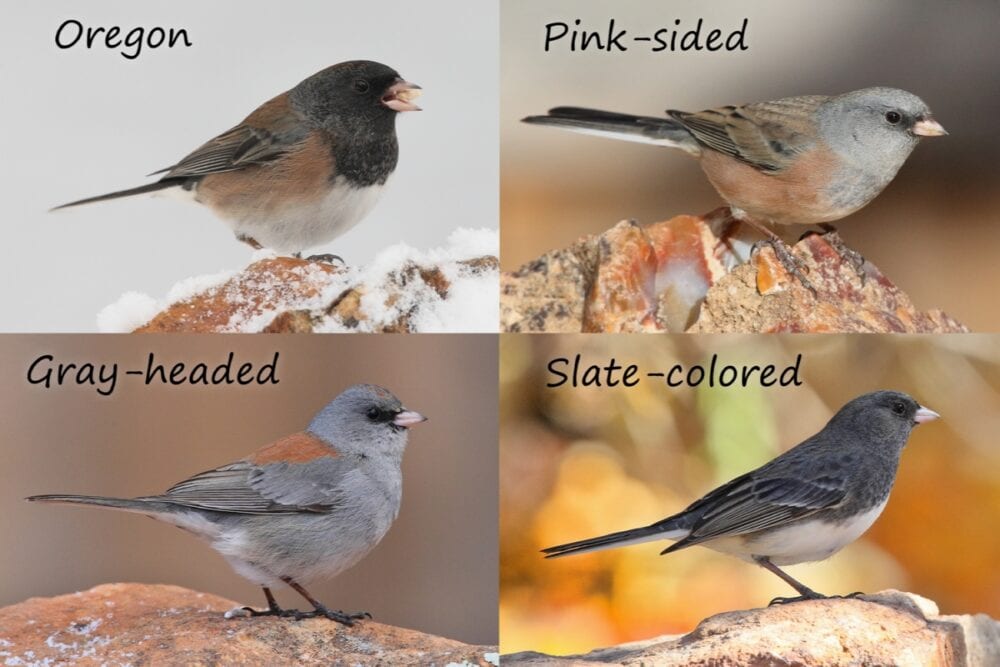

3) Dark-eyed Junco
There are so many different forms of the Dark-eyed Junco that it’s almost impossible to figure them out. They all are medium-sized sparrows with light pinkish to bluish bills and black eyes. They interbreed so easily that biologists can’t decide if they are one species with many subspecies, or many different species. The Gray-headed Junco (lower left) is a year-round resident and breeder in Los Alamos County, while the other three most common subspecies are winter visitors only. The Slate-colored form (lower right) is primarily an eastern bird, while the Oregon and Pink-sided forms (top) are winter visitors from up north. They are primarily ground-feeding seedeaters, especially favoring grass seeds and millet.
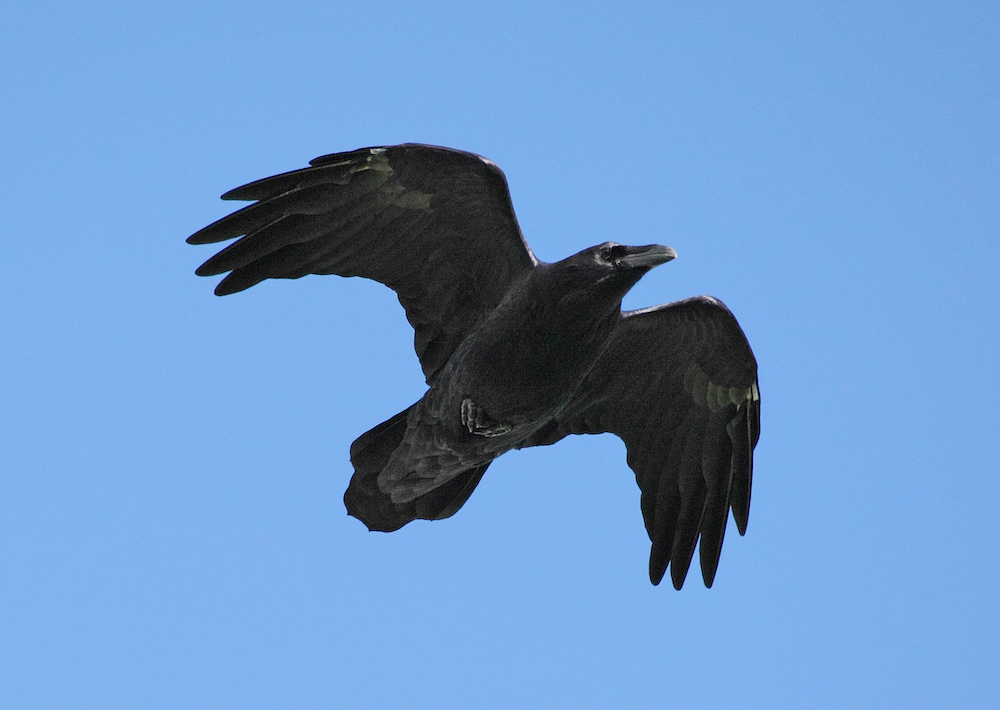

2) Common Raven
This large black bird is the second-most commonly reported bird in Los Alamos County. And, why wouldn’t he be, as Common Ravens can almost always be found soaring in the skies above us. Clearly resembling the American Crow, Ravens are much larger, have very stout beaks and wedge-shaped tails. Their calls are much deeper and sound more like croaks than the “cawing” of a Crow. They are opportunistic feeders, taking everything from seed to invertebrates to small mammals and even baby birds from their nests. They are very intelligent birds that can frequently be seeing playing around in pairs in the sky, executing very acrobatic flying maneuvers.
And now, for our MOST COMMONLY reported bird … meet the House Finch!


1) House Finch
The House Finch is the most commonly reported bird in the County. These familiar year-round residents will nest in a Christmas wreath on your front door, under the eaves of your house, feed on insects and seeds, and sing a very cheerful song consisting of a series of warbles and trills, often finishing with a short buzz. The males (right) have a brick red wash to their heads and upper chest, while the females (left) are a soft streaky-brown. The females resemble a Pine Siskin, but either sex can easily be distinguished from Siskins by the shape of their bill – a shorter and slightly curved beak that is perfect for eating their diet of seeds. House Finches are another introduced bird that has rapidly spread across the United States — some original birds captured in California were released on Long Island in the 30’s, and have now spread west, while the California population has spread east, so that now every state in the country is home to the House Finch.


Great photos, Bob! I wish the ones I see would hold still the way yours do.
My favorite is the flicker–I always wonder how something made of slender feathers could have so many spots and stripes on it. Lately I’ve been hearing flickers make a crazy wild noise– the bird books translate it as “wika wika wika” but that doesn’t show you how LOUD it is.
Thanks for this outdoor fun!
Thanks, Becky. I had a Flicker do his “wika wika wika” thing right behind my head this morning, and it was startling! I need to do another list of 20 very colorful birds we see here in the County! The Flicker would be there for sure.
Add and the album would be complete
If you make the album “by season” it would be a real time tutorial.
Loved your blog. I read it after walking around my yard and stopping to watch a tree full of totally-fearless wee bush tits. One came inches from my nose and completely ignored me—A welcome break from my elder-citizen quarantine.
Jo, I am also quite a fan of Bushtits, which I think of as being a golf ball with a long tail. They gather in large congregations on seed and suet feeders, making the neatest little chatter ever. It’s really hard to get one to sit still ong enough to get a photo, but I keep trying!
While other birds on this list have wonderful colors, my favorite is the canyon towhee. He’s my social bird. When I go to the tool area, there he is hopping around the various tools. When I’m working in the flower beds, he will come over and dig with his tiny feet. And look for that beautiful necklace some of the canyon towhees adorn.
Thanks Judy, your comments fit the Canyon Towhee wonderfully. It’s remarkable how comfortable they seem to be around people.
This is fabulous and thank you Bob. My favorite is Western Bluebirds. I see now they come in pairs to my water and ready to start their families. Putting a Bluebird house now may be tried.
Selvi,
Thanks for your comments Selvi. We are very fortunate to see Western Bluebirds as much as we do. We have a house put up over at the Nature Center, but I think it was a White-breasted Nuthatch that used it last year. I should think about cleaning it out for this year, good suggestion.
Bob
Thank you so much for this list! I’ve always loved the number of birds in Los Alamos and wished I could identify them. I’m thinking of setting up a bird feeder to keep us entertained during this period of quarantine…do you have a recommendation for the type of seed I should buy? What does the nature center use? Any other tips I should know about?
Hi Rachel! Of course. This should give you a good start for identifying our common birds. We have a few different feeders at the nature center included shelled sunflower seeds, suet, and thistle. We’d encourage you to check out our wildlife camera livestream tomorrow morning at 10 AM with our bird expert Bob Walker here: https://www.youtube.com/watch?v=yIIn-gREEzA. He leads our bird feeding program at the nature center and is sure to have answers to your questions. If you can’t make it, let us know and we’ll get your questions answered!
Rachel,
Thanks — I’ll put in a good word for our local pet store Pet Pangaea — we get most of our bird seed there. We buy both Black Oil sunflower seeds (the empty shells do leave a mess on the ground), and bags of mixed seed — either their Sangria de Cristo mix or their Sandia mix. Both mixes have a lot of sunflower seeds (which the birds grab first), and then some white millet. The Sangre mix also has corn (Crows and Ravens and squirrels will eat it), and the Sandia mix has some red millet (or maybe it is milo, I should check). Milo is probably all the animals least favorite component — grocery store seed bags are usually way overloaded with milo, used as a filler.
Bob
Thank you! I had heard that grocery store mixes had a lot of fillers, so over to pet pangea I will go! Also, I watched much of your broadcast yesterday, and very much enjoyed it (as did my 2 and 4 year old, they were fascinated). I hope you keep doing it!
Thanks Bob, I have this article open permanently in a tab so I can reference it while sitting in our back yard 🙂